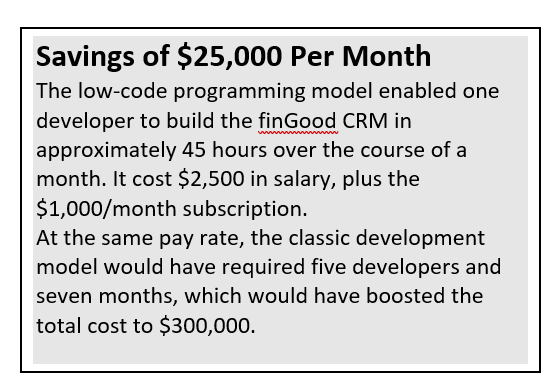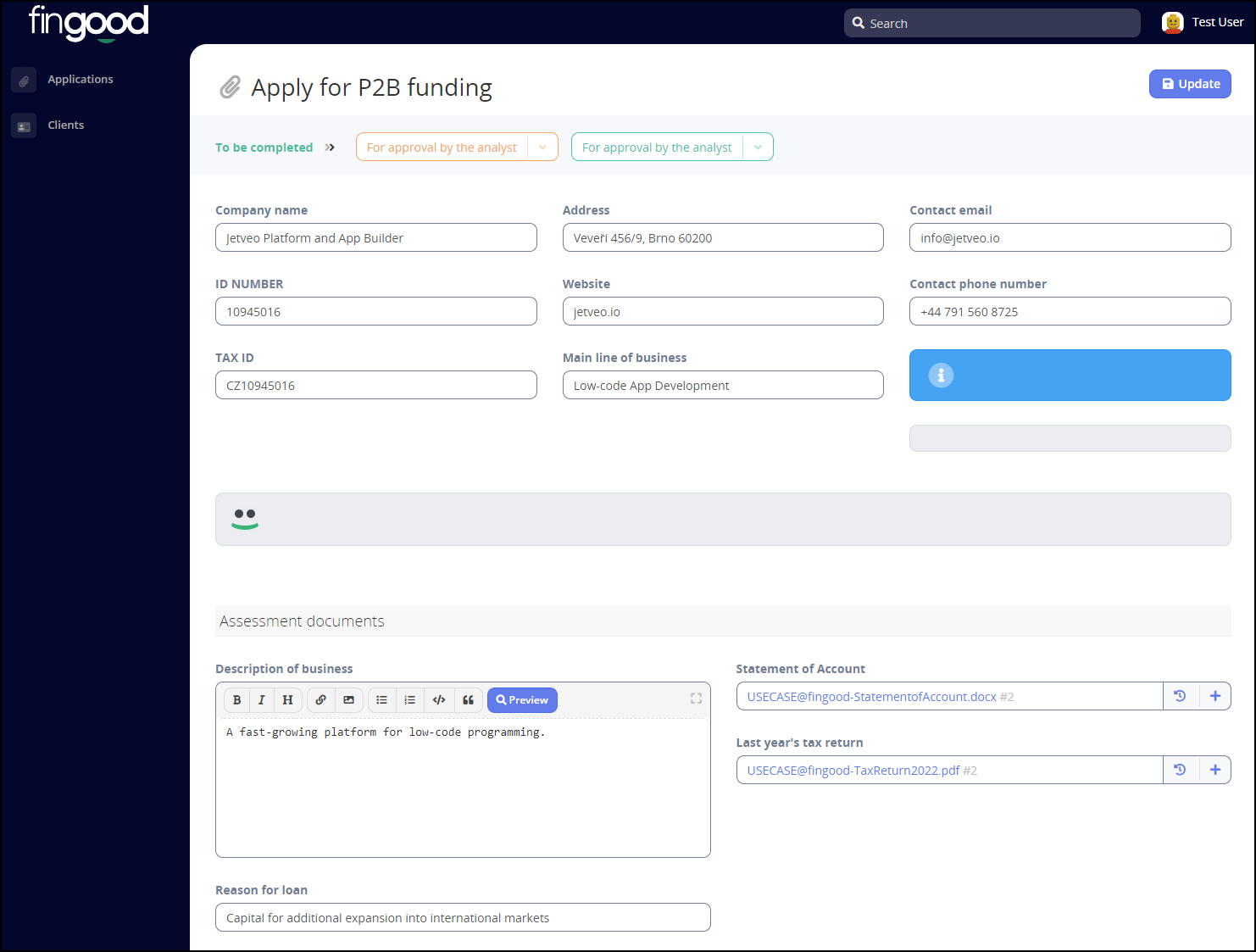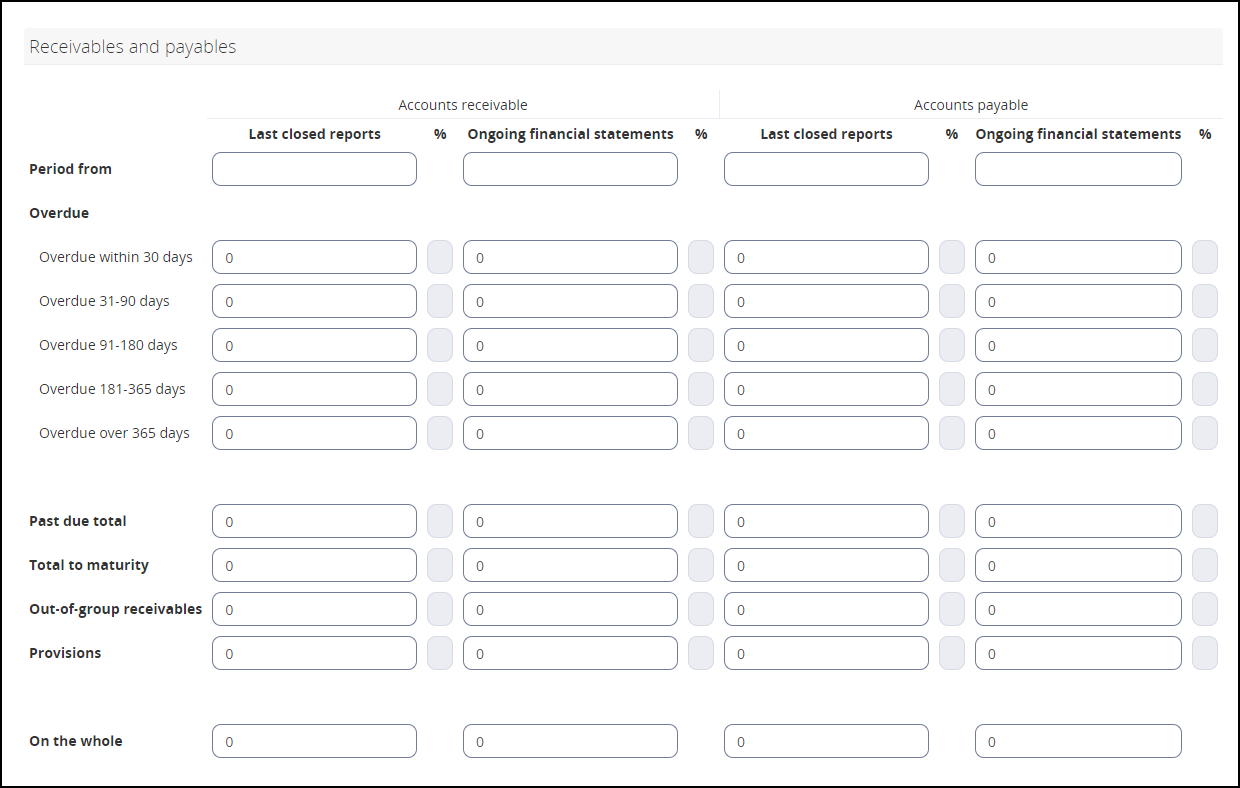How to Establish An Efficient Information-gathering Workflow
An online Customer Relations Management (CRM) application streamlines the laborious process of getting information from new customers, both saving time and reducing errors.
How do you get information from new customers?
It seems like a simple question about a simple process. Yet, there are many ways in which that foundational step can be improved.
Think of the annoyances: Meetings are hard to schedule and take time. Paper questionnaires and forms are cumbersome, and often incomplete. Follow-up communication is often necessary. Once you finally have the information, you need to get it into your online database, which is both time-consuming and prone to human error. Then there are phone calls, emails, maybe another meeting.
An online Customer Relations Management (CRM) application goes a long way to handling these issues in order to save time and reduce errors.
finGood provides a perfect example for how such an online process can be incorporated to huge benefit:
finGood
finGood is a Czech company that offers crowdfunding and investment in proven Czech businesses. It markets itself as online and simple: “Invest in secured corporate loans through crowdfunding and get a better value for your money with a fixed return.” It has more than 10,300 investors with an annual yield of 8-12%. Investors put up as little as $100. They know in advance how much they can earn and they receive a thorough risk analysis for each investment. And, every month, they rejoice in their income.
Setting up an investment, however, requires a lot of data. After an initial registration and identity check, the comprehensive form includes more than 250 fields of data. Unlike community projects or general fund-raising campaigns, finGood must be discerning with its clients: If it is to attract investors and find success, it will only be as good as its projects.
Getting all of the data on paper proved untenable. So, the company's CTO used Jetveo tools to smooth out the system. There is now a public-facing form where new clients enter their information. The initial identity-check data is provided to internal staff for the risk assessment. Then, more comprehensive and detailed information is requested, either through an automated message or, given that human-to-human communication is not yet completely dead, a phone call or personal email. In any case, the app provides the framework for the information-gathering and the applicant fills it all out at their leisure — without taking up the time of internal staff.

The form, which includes workflows and business logic, is a CRM that was customized specifically for finGood (see below).
The data and documentation are provided by the participant directly into the app, perhaps in the privacy of their own offices where they have their official documents. Everything is legible. Nothing need be hand-entered into a database.
Each part of the online form is a re-creation of the old-fashioned hard-paper form, except technology takes care of many related tasks and guards against errors:
— Each section has simplified fields with pop-up boxes to keep the applicant from getting lost.
— Graphics and a logical layout lead the applicant through the step-by-step form.
— Drop-down menus and radio buttons define the potential answers, and ample space is provided for written responses and explanatory notes, even lengthy responses that would not have fit on the original form.

— Connections to internet databases prefill some established information, like Tax ID information and publicly available business data.
— Graphics, logos, images, videos, and digital documents can all be uploaded directly into the form.
— Uploaded documents stay with the form, so that there is no need for staples, paperclips, or binders, and nothing gets separated and lost, including official documents like: company hierarchies; related investments; financial statements; tax returns; asset valuations; and other loans.
— Publicity-friendly information that can be used on a public-facing website (for finGood, in order to encourage investors) is left to the applicant to put their best foot forward. Applicants get a lot of help: access to the internet for quick research; spellcheck; and online translations.
— In-form mathematical formulas calculate data as it is entered, and adjust as the values are changed.
— There is no need to reprint stacks of forms to make minor changes: Graphics can be added and adjusted as necessary and spelling corrections and additional guidance can be added when needed.
— Information boxes provide suggestions and instructions for specific data entries so that the applicant knows what is expected and in what format.
— Notes and warnings inform the applicant about nuances within the answers.
And, importantly, the forms can be designed to adjust to the type of project or purpose, according to the selections made in certain sections.
Online smart forms are a big step forward, specifically for internal staff:
— Automated notifications are in place to facilitate the in-house flow of information.
— Flags highlight significant sections to help with the internal decision process.
— Having projects included with the same forms enables a lot of opportunities for crunching the data, like: comparisons between different projects; workflows for internal operations; storage for documents and information that is safe and secure in the cloud; and easy searchability.

— Typed font on a screen removes any ambiguity between spellings and numbers, unlike chicken-scratch handwriting that is a struggle to comprehend. Literally, every “t” is crossed and every “i” is dotted.
— Web browsers allow you to increase the size of the document to help your tired eyes read the information more efficiently.
And the beauty is that the CRM is completely customizable through the Jetveo low-code programming model. The building blocks are established, then the custom coding allows for the layouts that fit the unique business.
What About You?
Every company has internal procedures that, were they streamlined, would make the overall business more efficient. What about your information-gathering processing?
- How do you know when an applicant has ignored an important field?
- How do you know if a digit was inadvertently left out of an account number?
- How do you know if the document is authentic?
- Do you have enough places for additional information where the applicant can explain complex situations?
If your information gathering could be more efficient, then check out a CRM like the one that boosted finGood's application process. The Jetveo Platform and App Builder was built to take advantage of all of the benefits provided by the low-code programming model in order to offer the best of two worlds: the flexibility and power of classic programming and the simplicity and efficiency of no-code programming. It is the perfect tool to upgrade your business-critical processes and bolster your development.
See what Jetveo Platform and App Builder can do for you. Go to jetveo.io for more information and to see a demo app in operation.
 EN
EN
